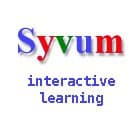
7 Italian Translation Exercise Resources
Go on, show us which Italian words you know like the back of your hand.
Italian translation exercises will let you hone your skills and strut your stuff.
This post will walk you through seven unique resources for translation practice that you can take anywhere.
Soon enough you’ll have Italian skills you can’t wait to show off.
Contents
- 1. 101 Languages Flashcards
- 2. FluentU
- 3. Italian Translator +
- 4. Ingliando
- 5. Syvum
- 6. Conjuguemos
- 7. Coffee Break Italian
- Why Bother with Translation Exercises?
Download: This blog post is available as a convenient and portable PDF that you can take anywhere. Click here to get a copy. (Download)
1. 101 Languages Flashcards
Language flashcards are a simple but effective tool for translation exercises. They let you efficiently test your knowledge of Italian words and they’re a convenient option for practice anytime, anywhere.
And you don’t even have to make your own. 101 Languages offers reference materials and practice tools in (fittingly) over 100 languages, including Italian vocabulary flashcards. With just a little button pushing, you can flip between a number of vocabulary sets divided by topic.
As these flashcards are imported from Quizlet, you can also search for the sets on Quizlet to find a number of “study mode” options. You can start in “learn mode” to pick up the translations of new words, then “flashcards” for review exercises.
101 Languages is available online at no cost.
2. FluentU
FluentU is a fun, immersive Italian learning tool that surrounds you with the Italian language and culture through authentic Italian videos. These videos were created by native speakers for native speakers, so they’re good material for translation practice.
Every video has interactive captions verified by language experts. The captions can be customized to suit your needs, toggling Italian or English versions as you like. You can also click on any word as the video plays to find an in-context meaning, a pronunciation guide and more videos with this word being used.
Any word can also be added as a flashcard to decks of your creation, and then studied through personalized quizzes.
Videos are categorized by skill level, topic and format to make it easier for you to find the right videos to suit your needs and interests.
You can use FluentU in your browser or download the iOS or Android app to take the learning on the go.
3. Italian Translator +

It’s designed to provide a comprehensive Italian vocabulary resource. The app’s main features include its dictionary, phrasebook, translator, flashcards and verb conjugator. All of these features can become vital tools for translation practice—here’s how:
- Flashcards, as we’ve already talked about, let you practice translation with specific Italian vocabulary.
- The phrasebook gives you Italian and English versions of common phrases you’ll need on-the-ground in Italy. Practice translating the phrases from Italian to English or the other way around, then check against the app. You could also try using the translator to adapt these phrases or translate words.
- The dictionary provides English translations of Italian words and also shows you common expressions the words are found in, again with English translations provided.
- The verb conjugator helps you confirm that your English-to-Italian translations are correct by showing you the right verb forms for different subjects.
This is a particularly good app for people who consider themselves thorough students, double and triple-checking their vocabulary and making sure that their grammar and understanding of the words fits just right. The app is free and available on iOS.
4. Ingliando

Once you select a translation activity, you’ll find the sentences written in Italian at the top of the page and the English translations below.
Not only can these exercises help you practice translating into both languages, but you can also use them to pick up some useful vocabulary and see Italian sentence structure in context.
The translation activities are available for different levels. For beginners, you can check out the A1/A2 activities here. You can also access the B1/B2 level Italian translation activities here.
5. Syvum

With Italian exercises covering a range of vocabulary topics, from colors and animals to numbers and body parts, it’s helpful for those who are beginning to learn Italian.
While the vocabulary may be simpler, it’s still a useful resource for more advanced Italian learners who want to practice translating basic vocabulary.
6. Conjuguemos

For Italian translation practice, you can use this website to learn and translate an array of Italian vocabulary, including Italian adjectives, numbers and vocabulary related to the house.
For instance, you could start by learning the vocabulary with flashcards before testing what you have learned with the graded practice option, or even one of the games, like Vocabulary Battleship or Crossword.
7. Coffee Break Italian
You might already be familiar with the Italian learning podcast Coffee Break Italian. But you might not realize its potential for translation exercises, thanks to the transcripts and notes that come with every audio lesson.
These materials offer translations of the words and phrases that are taught in each audio lesson. The Italian version is in green with the English translation underneath. They also come with example Italian interactions or context.
You can try reading the notes first to learn the translations. Then, return to them after the audio lesson, cover the English versions and practice translating what you remember.
Best of all, you can easily print off the lesson notes and take them for further review anywhere.
Exercising Italian terms in this particular way lets you learn them by sight and by ear simultaneously. Being able to translate words on paper is always important, but there’s still the need to make sure you can translate verbally so your speaking is accurate.
Why Bother with Translation Exercises?
Language learning in and of itself can be thought of as a long translation process. When you learn a second (or third, or fourth) language, you’ll be using your native language as a starting point. You measure new languages based on your first one, and basic translations often work as the foundation for your studies.
Taking time to practice translating can be a big help in your language journey! Translating provides a bunch of important tools for language learning: it helps you remember your vocabulary, pick up new terms and start constructing your own sentences in Italian.
This doesn’t mean that translation is always easy, though. Some things just don’t carry over quite the same from English to Italian and vice versa. When translating, it’s important to remember that every language is built within a specific cultural context, and one that you might not be familiar with yet.
In turn, this means that translation exercises force you to consider all kinds of crucial language questions, such as:
- The situations that certain words or phrases are used in
- Their level of formality or who uses them
- Allusions to Italian literature, pop culture, etc.
- Whether certain words have double meanings
There are so many ways to polish your Italian translation skills and so many resources to choose from. Taking the time to figure out what works best for you can make a huge difference in your study progress.
Download: This blog post is available as a convenient and portable PDF that you can take anywhere. Click here to get a copy. (Download)





